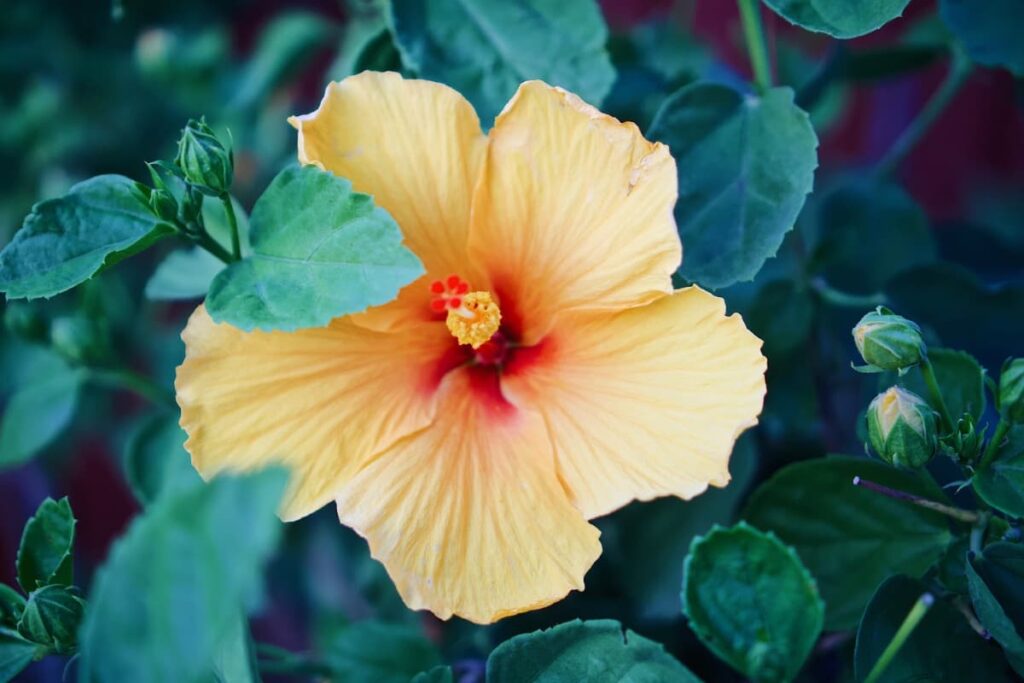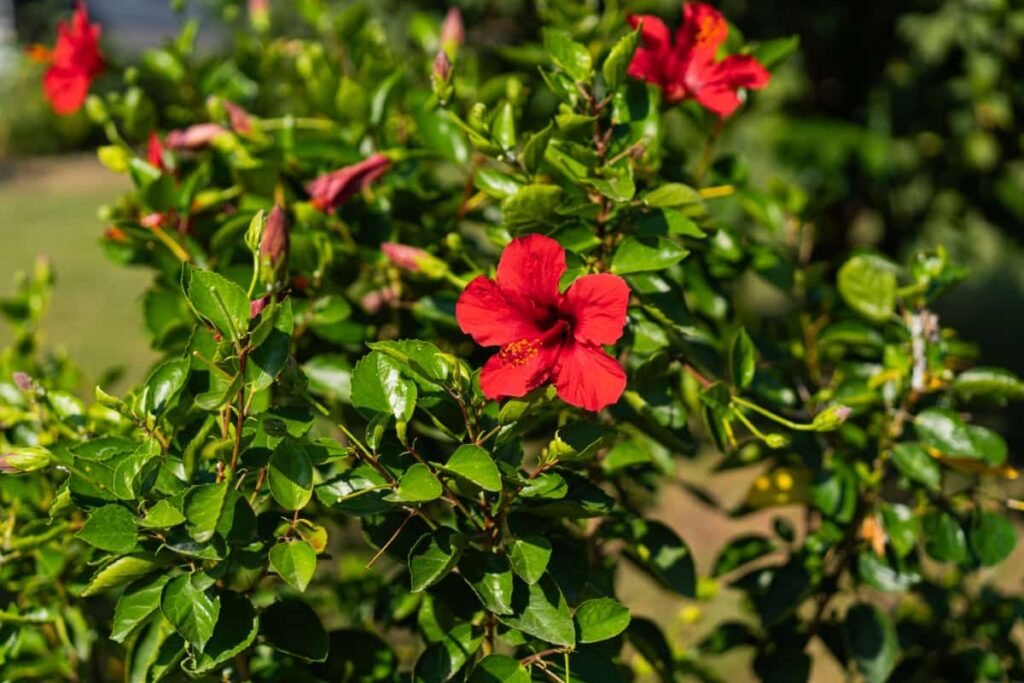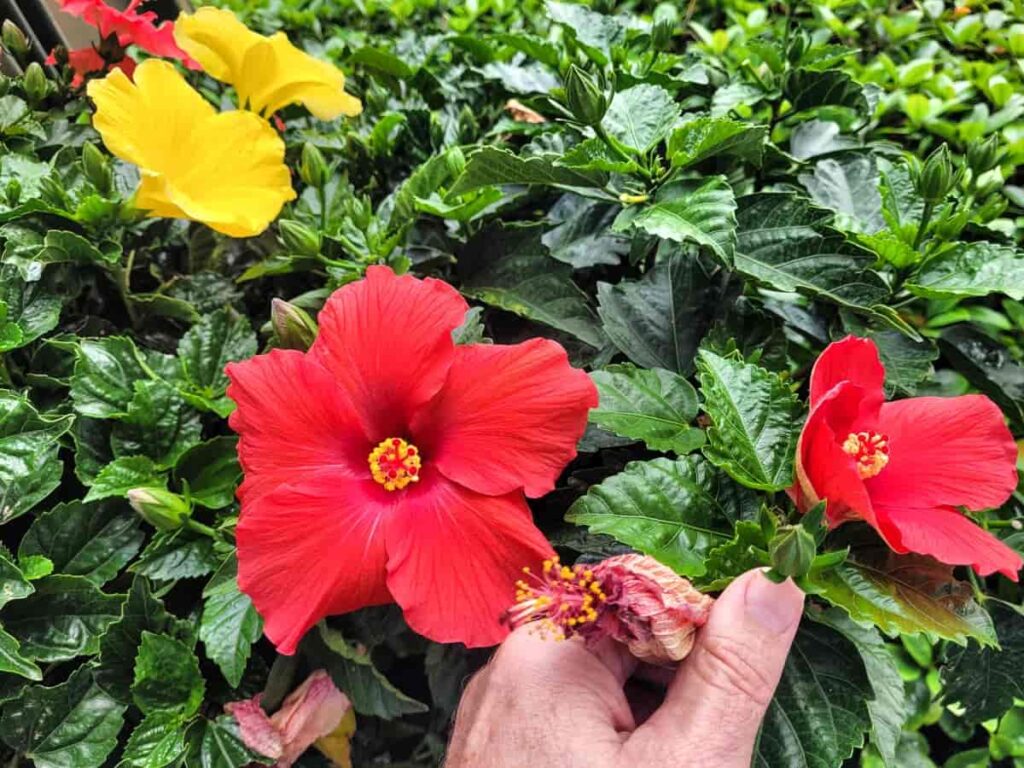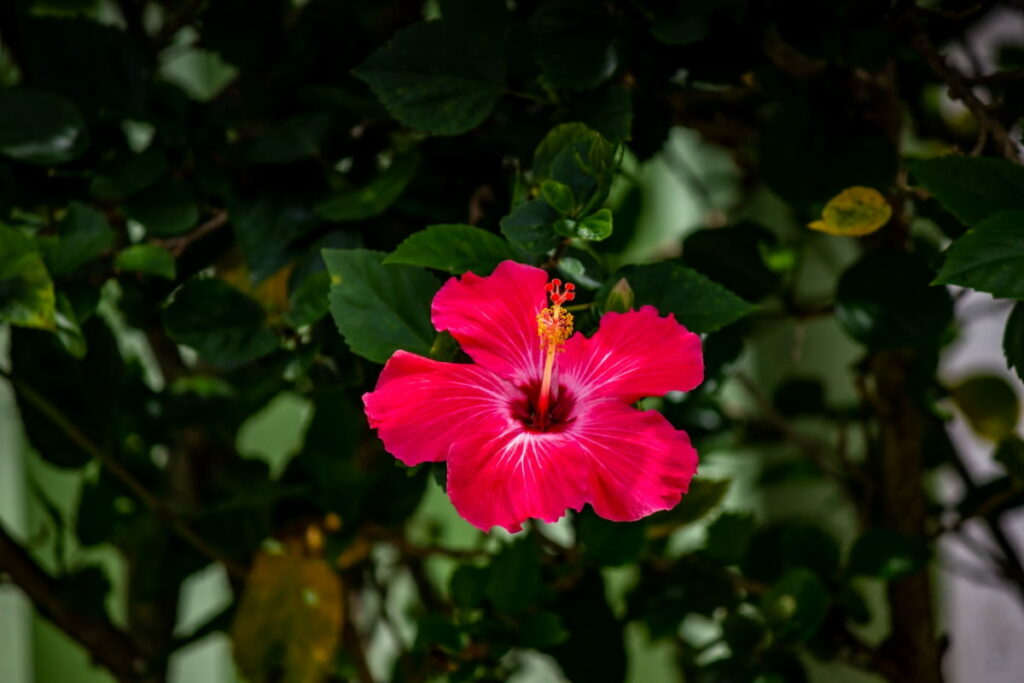Hibiscus (Hibiscus rosa-sinensis) is a flowering plant belonging to the mallow family, Malvaceae. Hibiscus plants are known for their beautiful blooms, but sometimes, those promising buds won’t stick around. Understanding these factors influencing your Hibiscus buds falling off will help you take appropriate measures to ensure a healthy and vibrant garden display.

10 Reasons Why Your Hibiscus Buds are Falling Off
Insufficient Watering
Hibiscus plants are thirsty, and they require consistently moist soil to thrive. When the growing soil becomes too dry, the plant may start shedding its buds as a survival mechanism. Make sure not to overwater either, as this can affect some issues. It’s all about finding that perfect balance for your Hibiscus plant.
Watch for the soil moisture levels by checking regularly. If you notice your Hibiscus buds falling off prematurely, consider adjusting your watering schedule accordingly. Remember that each plant is unique and may have different water requirements based on factors like temperature and humidity levels in your area.
Nutrient Deficiency
Hibiscus plants are like high-maintenance plants when it comes to their nutrient needs. They need a balanced diet to thrive. Nutrient deficiency is one sneaky culprit behind those falling Hibiscus buds. If your Hibiscus leaves are turning yellow or showing signs of stunted growth, it might be craving some nutrients. Nitrogen, phosphorus, and potassium are the superstar trio that these beauties require in the right amounts.
A lack of proper fertilization can throw off this delicate balance and leave your Hibiscus feeling malnourished. Remember, moderation is key when feeding your plant – too much of a good thing can lead to trouble too. To keep those Hibiscus buds happy and healthy, consider using a slow-release fertilizer specifically formulated for flowering plants. Your blooms will thank you with vibrant colors and abundant blossoms.
Pest Infestation
A pest infestation can be a major problem for Hibiscus plants, causing their buds to drop prematurely. These pesky invaders like aphids, spider mites, or thrips can wreak havoc on your beautiful blooms. They suck the sap from the plants, weakening them and hindering bud development.
To combat these unwanted guests, regular inspection of your Hibiscus is crucial. Look out for any signs of pests, such as discolored leaves or sticky residue. Using natural control remedies like neem oil can help to control pests. Maintaining good plant hygiene by removing any dead leaves or debris can also deter pests from making themselves at home in your Hibiscus garden. Remember, prevention is important when it comes to pest infestation in Hibiscus.
Disease Infection
Disease infection can be a major reason why your Hibiscus buds are falling off. These beautiful plants are susceptible to various diseases, like powdery mildew or leaf spot. When left untreated, these diseases can weaken the Hibiscus plant and cause it to drop its buds prematurely. To prevent disease infection in your Hibiscus, make sure to provide adequate air circulation around the plant by not overcrowding them. Avoid overhead watering the Hibiscus plant, which can create a damp environment ideal for fungal growth.
In case you missed it: 10 Reasons Why Your Lotus Plant is Not Blooming: 100% Effective Solutions for Flowering Issues in Lotus

Regularly inspect your Hibiscus plants for any signs of disease and treat them promptly with appropriate fungicides. Maintaining good overall plant health is crucial in preventing disease infections in Hibiscus. Ensure that your Hibiscus is receiving proper nutrients, sunlight, and water to strengthen its natural defenses against pathogens. By being proactive in caring for your plants, you can help reduce the risk of disease-related bud drop.
Improper Pruning
Improper pruning can have a significant impact on the health of your Hibiscus plants. When done incorrectly, pruning can lead to stress for the plant and result in bud drop. It is essential to know the proper methods for pruning Hibiscus to ensure optimal growth and blooming. One common mistake is cutting back too much of the plant at once, which can shock it and cause buds to fall off. Another issue is using dull or dirty tools when pruning, leading to jagged cuts that are more prone to disease.
Pruning at the wrong time of year can disrupt the plant’s natural growth cycle and result in bud loss. To prevent improper pruning from causing Hibiscus bud drop, make sure you educate yourself on the correct techniques or consult with a professional gardener for guidance. Properly maintaining your Hibiscus through careful pruning practices will help promote abundant flowering.
Extreme Temperatures
Extreme temperatures can wreak havoc on your Hibiscus plants, causing their buds to drop unexpectedly. These sensitive tropical beauties thrive in warm climates but struggle when faced with extreme heat or cold. High temperatures above 32°C can stress the plant and lead to bud loss. On the other hand, sudden drops in temperature below 10°C can also shock the Hibiscus, causing it to shed its developing buds as a defense mechanism.
To protect your Hibiscus from extreme temperatures, consider providing shade during scorching hot days and bringing potted plants indoors during cold snaps. Maintaining a consistent environment for your Hibiscus will help prevent bud drop due to extreme temperatures. Keep an eye on weather forecasts and take proactive measures to shield your beloved plant from temperature fluctuations that could harm its delicate blooms.
High Humidity
High humidity can be a common culprit when it comes to Hibiscus bud drop. These tropical beauties thrive in warm but not overly humid conditions. When the air is too moist, it can interfere with the proper development of Hibiscus buds, causing them to fall off prematurely. Excessive air moisture can make a breeding ground for fungal diseases that may attack your Hibiscus plants.
To combat this issue, ensure good air circulation around your plants by spacing them appropriately and trimming any overcrowded branches. Consider moving your Hibiscus to a location where they receive some protection from the direct effects of high humidity. This could mean placing them under a partially shaded area or near other plants that provide some natural shelter.
Poor Soil Conditions
When it comes to your Hibiscus plants, the soil they grow in plays a crucial role in their overall health and well-being. Poor soil can lead to various issues, including Hibiscus bud drop. If your Hibiscus is not planted in well-draining soil or if the soil lacks essential nutrients, it can impact the plant’s ability to absorb water and vital minerals.
This can result in stress for the plant, leading to problems like dropping buds. To ensure that your Hibiscus thrives, make sure you are using a high-quality soil mix to improve its texture and nutrient content. Regularly check the soil pH level as well, as Hibiscus plants prefer slightly acidic conditions.
Over-fertilization
Over-fertilization can be harmful to your Hibiscus plants, causing their buds to drop prematurely. When you provide too much fertilizer, it can lead to an imbalance in nutrients that the plant cannot effectively absorb. This excess of nutrients can put stress on the Hibiscus, leading to bud loss. It’s important to follow a proper fertilization schedule and use a balanced fertilizer formulated for flowering plants like Hibiscus. Avoid overzealous feeding, and always read the instructions carefully before applying any fertilizers.
In case you missed it: 10 Reasons Why Your Marigold is Not Blooming: 100% Effective Solutions for Flowering Issues in Marigold Plant

Excessive nitrogen in fertilizers can stimulate excessive vegetative growth at the expense of flower production. This imbalance can result in weak buds that are prone to falling off before blooming fully. To prevent over-fertilization, consider using organic alternatives or adjusting the dosage according to your specific plant’s needs. Remember that moderation is important to feeding your Hibiscus plants for optimal growth and blooming success.
Stress from Transplanting
Transplanting can be a stressful experience for your Hibiscus plants. Moving them from one location to another disrupts their root system, causing shock and potential bud drop. The sudden change in environment can leave the plant feeling unsettled and vulnerable. To minimize stress from transplanting, ensure that you carefully handle the roots and soil when moving your Hibiscus. Give them time to adjust to their new surroundings by providing consistent care and attention. Avoid transplanting during extreme weather conditions or when the plant is already blooming heavily.
In case you missed it: 10 Reasons Why Your Potted Plant Leaves are Drying: Prevention and Treatment

Conclusion
Hibiscus bud drop can be frustrating for any gardener, but understanding the causes can help you address the issue effectively. Preventing Hibiscus bud loss is crucial for maintaining the health and beauty of your plant. By understanding the common reasons behind bud drop, you can take proactive ways to ensure your Hibiscus thrives.
- How to Maximize Sheep Farming Profit
- Broccoli Varieties: Choosing the Right Cultivars for Your Farm
- How to Raise Pigs in Your Own Backyard: A Comprehensive Guide
- Budget Friendly Sheep Shed Ideas: Cheap and Low-Cost Tips
- How Much Do Cattle Farmers Make: Revenue Streams in Cattle Farming
- Management Pests and Diseases in Your Cotton Field
- Sheep Farming Business Plan for Beginners
- Aquaponic Farming at Home: A Step-By-Step Guide
- Profitable Village Farming Business Ideas in 2024
